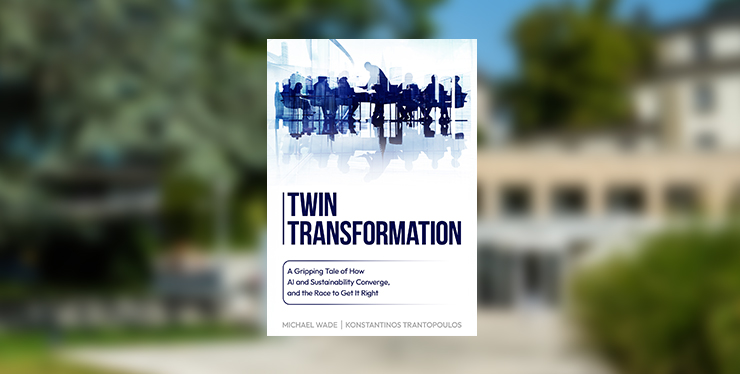
How to build an agile beast
The €10 billion food packaging business Tetra Pak once faced a dilemma familiar to most multinational corporations. The company was mired in a classic “strategic-agility conundrum” — it lacked the nimbleness needed to respond to fast-paced, global markets. A rigid strategic-planning process hampered its ability to be agile — a key challenge faced by many firms today, particularly as they respond to new technology and competitors — but one that the vast majority fail to pull off, according to a widely-cited study by McKinsey & Company.
Many scholars have been quick to declare that the conundrum is a disease without a cure. They sniff that large corporations are too often bogged down by bureaucracy and rigid internal cultures that stifle innovation, and they cannot find an exit.
They are wrong. A glance at Tetra Pak reveals that there are ways to solve the strategic-agility conundrum — or at least control some of the worst symptoms.
By tweaking certain processes, executives can amend or reverse initiatives as market conditions evolve — cutting out escalating courses of commitment, or “throwing good money after bad”. To use a popular military analogy, they will be able to manoeuvre their companies like a squadron of navy destroyers, rather than a single, unwieldy aircraft carrier.
Tetra Pak’s woes hark back to 2003. At the time, it pursued a multi-product expansion strategy that focused on growing all its business units, especially those in emerging markets. At the same time, the company faced continuous competitive pressure from the plastic container industry and from startups in China selling lower-priced materials.
Despite aggressive global expansion, strategic initiatives were managed primarily at a local level, without cross-geographic or cross-unit coordination. Annual strategy reviews were only held at year’s end. And tactics and targets were reassessed during the annual strategic reviews only when results deviated from expectations.
These outdated processes led the company to conduct a major strategic review in 2010. The goal was to strengthen the link between long-term financial and strategic planning. Toward that end, cross-functional teams were created to investigate longer-term growth prospects. A top executive leadership program evaluated new opportunities. And the various business units would now use customized strategic planning, based on their current and anticipated needs.
These strategic initiatives gave Tetra Pak agility. The planning process moved from an annual decision-making cycle to a continuous one. By quickly starting, stopping or accelerating cross-functional plans, the company remained adaptive, year-round. This dramatically reduced the odds that money, time and manpower were drained. It also fostered alignment across geographic boundaries.
What’s more, resource allocation was better prioritized and coordinated for simultaneous, global rollouts. Multinational companies are especially competitive when they leverage new organizational knowledge and routines across boundaries. It helps them exploit economies of scale and scope. Headquarters should accelerate subsidiaries’ adoption of new global practices. They should serve as an active creator and disseminator of knowledge.
Continuous governance of cross-functional initiatives can also promote better communication. This helps senior management understand the context of each unit’s strategy. To assess the need for a fundamental strategic review of each entity, managers should use three criteria: the unit management’s openness to change; financial results; and the intensity of external pressure. When two of three criteria are met, the unit’s strategy should be reviewed. This replaces the burdensome annual planning cycle with a disruptive analysis, which forces discourse. Units that are doing well and are facing little disruption should be allowed to continue to implement their strategy without a fundamental review. Tetra Pak gained tremendous value from this customized strategic planning. They moved from an annual to a continuous decision-making process which increases agility — and can lead to greater strategic customization.
Committing to change continuously also helped the company better manage, track and integrate initiatives more cost-effectively. It led to a higher implementation of initiatives with realized financial benefits. It also confirms that it is possible to become both agile and be committed at the same time. With a customized planning process, Tetra Pak improved its responsiveness to fast-changing markets. The strategic planning process that Tetra Pak pioneered also helped the organization optimize the timing of investment decisions, foster initiatives that enable capability development, and tailor planning processes for every operating unit. In brief, through tearing up and redefining strategic planning, Tetra Pak became an agile beast.
Bettina Büchel is Professor of Strategy and Organization at IMD.
Research Information & Knowledge Hub for additional information on IMD publications
Last week, a notification flashed. “Add your email address for extra security,” my phone chirped. It was from WhatsApp. I stared at the screen, a single question forming in my mind: Security? Or surveillance? I tapped “No.” The feeling wasn’t ange...
Research Information & Knowledge Hub for additional information on IMD publications
Research Information & Knowledge Hub for additional information on IMD publications
Research Information & Knowledge Hub for additional information on IMD publications
Research Information & Knowledge Hub for additional information on IMD publications
in I by IMD
Research Information & Knowledge Hub for additional information on IMD publications
Research Information & Knowledge Hub for additional information on IMD publications
Research Information & Knowledge Hub for additional information on IMD publications
Research Information & Knowledge Hub for additional information on IMD publications
Research Information & Knowledge Hub for additional information on IMD publications
in I by IMD
Research Information & Knowledge Hub for additional information on IMD publications








